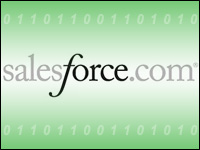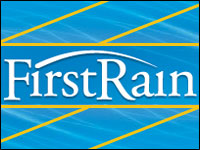
If you read Steve Jobs by Walter Isaacson, you get a good sense of the rivalry between Jobs and Bill Gates and Microsoft, or between Apple and the rest of the world more generally. But the rivalries were really between that past/present — and the future — and Jobs and Gates were only playing parts that were scripted long ago.
The play’s outlines are of insurgent new ideas against the status quo. It’s hard to look at the tech industry and think about a “status quo,” given the creative destruction inherent in all of it, but it’s there.
In Jobs’ view, he and Apple were the harbingers of the new — new design, new forms, new technologies. Design took precedence at Apple because it was the visible manifestation of ideas that were inside its devices, and it only became apparent once a user had some experience. Jobs liked to be the guy who understood what you needed and would want before you did. He repeated his magic in GUIs, music players, music stores, application stores, physical retail establishments, phones and tablet mobile computing. He also strongly influenced changes in the movie industry and in publishing. Not bad for a life that didn’t span six full decades.
On the other side of the divide, Microsoft more or less inherited the mantle of safe, predictable computing from IBM. While IBM certainly didn’t die — just the opposite — the corporate go-to technology company became Microsoft with its standardizing Windows franchise and Office products. Nothing much changed until corporate types fell hard for the iPad and tablet computing, but today Apple is one of the most valuable companies on the planet, surpassing Microsoft, because of its visionary innovation.
Identify, Then Invade
The ancient story’s rhyme (remember, history rhymes but it doesn’t repeat) becomes apparent again in the software industry with the emergence of Salesforce.com as the challenger of a status quo held up by pillars like Oracle, SAP and Microsoft.
As an observer of the scene for many years now, I have more than once wondered why Salesforce draws only half-hearted competition from the incumbents. Today just about every vendor has a cloud computing salient, but arguably, none is as visionary as Salesforce. Other cloud computing seems designed as a checkbox item — “You want it? Yeah, we’ve got it. Now how many servers can we sell you?”
In contrast, Salesforce is mounting a multi-dimensional challenge to the status quo that would make Steve Jobs proud. Their secret has been in identifying new opportunities and markets spawned by the growth of social technologies and then invading them. It’s a simple strategy, but it’s not always successful, and to an established industry averse to risk, it is terra incognita.
But look at what the company has already done in Jobsian imitation. It led the SaaS to cloud computing transformation, led the incorporation of social technology into the heart of enterprise computing, and led in the establishment of online application sourcing through its store. And it has led in numerous software development areas from making it possible to transfer Java applications to the cloud, to providing numerous ancillary applications and functions — e.g. data.com, database.com, desk.com, site.com and more.
It has also been a leading example for Wall Street of how a cloud company is different from a conventional software company. Salesforce is contributing significantly to the discussion of best practices and management metrics that others will be judged by.
The Socialized Enterprise
At its CloudForce event in San Francisco last week, Salesforce again showed its ability to think different — to identify neglected niches and provide software solutions that drive better management and better employee engagement. A few months ago, Salesforce bought Rypple, a Facebook-oriented employee management system that helps managers and their reports to stay focused on organizational goals using social techniques.
The old regime that Rypple attempts to replace is the annual performance review, in which both sides scramble to collect evidence of performance and attainment in the prior 12 months. If you’ve ever gone into a review meeting thinking things were good only to discover latent dissatisfaction that had festered over the prior year, you can appreciate the value of this solution.
Rypple is not an HR system, and some have criticized it for not being able to deliver something more grand. But it is another part of a socialized enterprise that leverages technology far beyond the conventional applications we all know about. Salesforce also showed off site.com, a cloud-based content management system for building Web properties.
In Salesforce CEO Mark Benioff’s keynote, he also showed off videos of numerous enterprises that have taken on the challenge of his social enterprise, and so far they appear to be thriving. There doesn’t seem to be a limit to what can be invented in the front office at this point. Certainly there will be limits, but it’s too early to consider them.


























































Social CRM
See all Social CRM